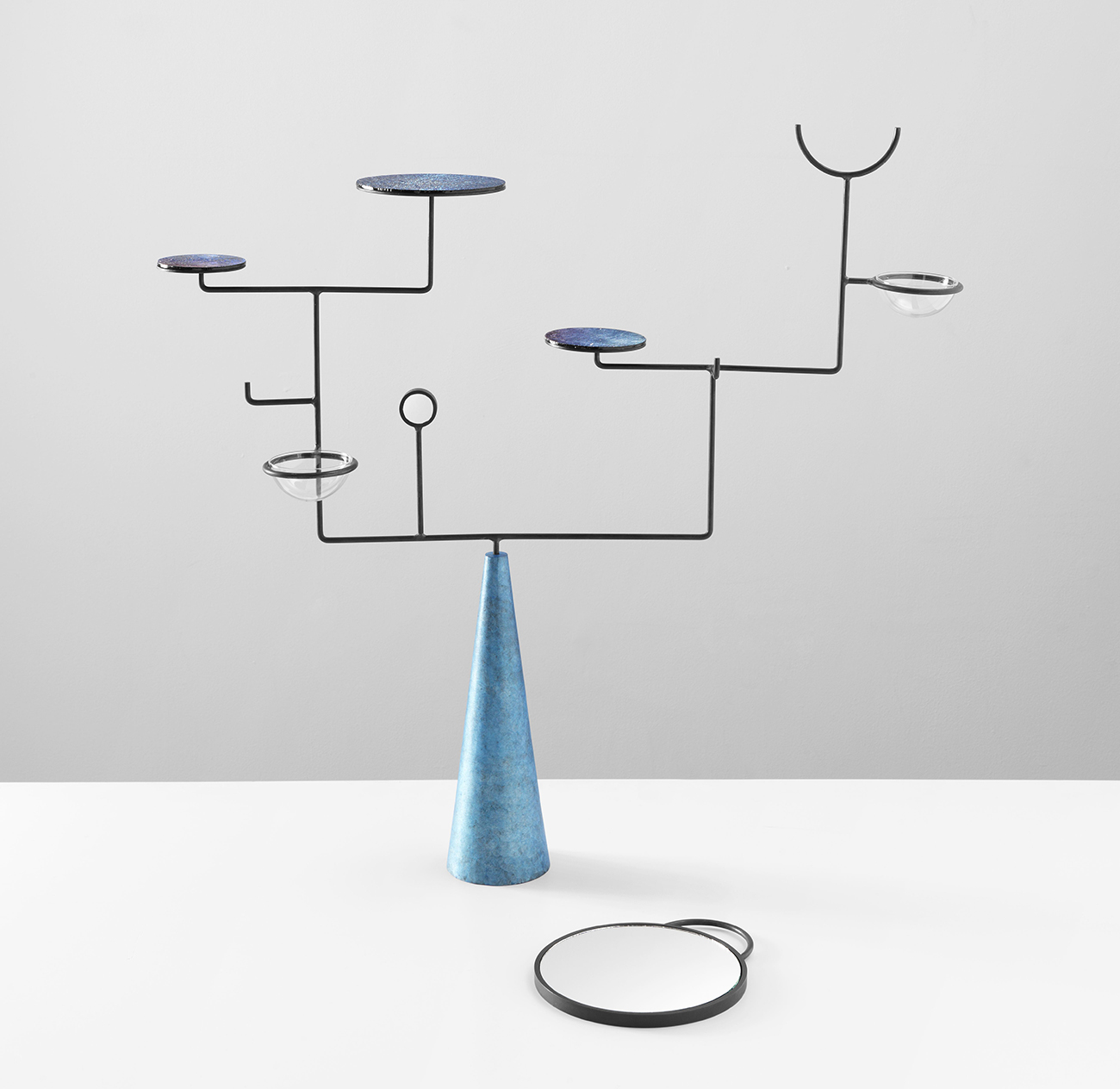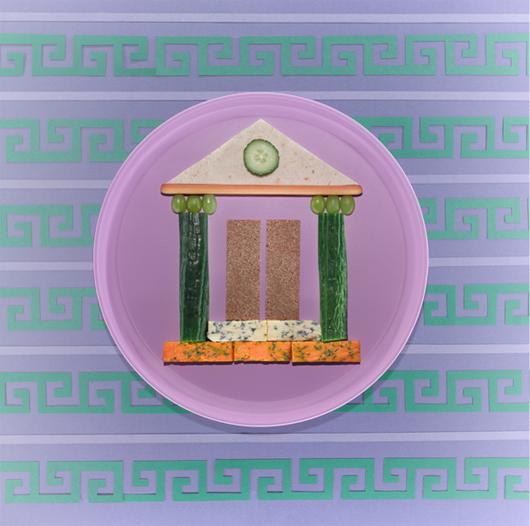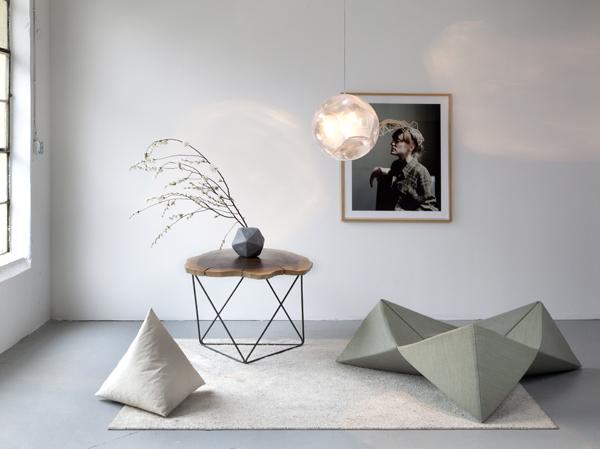
03.12.13
Excerpt: Exhibition
5 Platonic Objects by Christian Wassmann at R 20th Century
Swiss architect Christian Wassmann is quite the chameleon: Not only does he seem to float effortlessly between every important New York fashion party, design talk, and art opening, equally at home in every crowd, his work also spans myriad scenes and disciplines — from the interior of a scrappy East Village radio station, to a massive installation with fashion darlings threeASFOUR at the Arnhem Mode Biennale, to his latest project, a suite of transformable furniture for the high-end Tribeca design gallery R 20th Century. While we’re not sure how to explain his social gifts, his professional versatility comes down to something we here at Sight Unseen can certainly appreciate: Wassmann’s longtime appreciation for geometric forms permeates everything he does, and those shapes by their very nature happen to work just as well on a small scale as they do on a larger one. In honor of his first small-scale effort, we did a little interview with him which we’ve posted below, but first, here’s some information from the gallery release:
“Wassmann’s interest in platonic solids derives from his obsession with beauty found in geometry. For this exhibition, he has created five objects that demonstrate how these forms can fulfill the basic needs of someone inhabiting a space. This architectural approach to furniture design incorporates absolute geometric forms into versatile objects of daily life: a pillow, a stool/chair, table, lamp/optical device, and a vase/urn. Wassmann sees these as existential objects that invite the human body to experience or use them, allowing them to change shape and function upon one’s encounter or engagement with them.
“Each of the five objects in the exhibition is based on one of the five platonic solids – tetrahedron, hexahedron, octahedron, icosahedron, and dodecahedron – a series of symmetrical polygons with four, six, eight, twelve, and twenty faces, that have been a source of wonder among artists, philosophers, and designers since antiquity. Over the years, Wassmann has experimented with these forms in material studies and devised five pieces, each of which serves at least two functions. All of Wassmann’s work encompasses a philosophy that design and architecture do not necessarily abide by the Modernist ideology ‘form follows function’ — rather, they present how ‘form performs function.'”
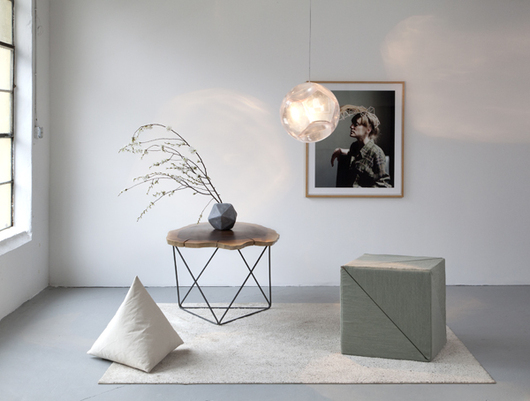
Can you describe three different moments in your early life, education, or career that may have influenced your arrival at this collection of objects?
Part of the reason I love these pure shapes or geometry in general is probably my early exposure to Froebel Gifts (wooden building blocks for children designed by Friedrich Froebel in the early 1800s). Later, during art school, I attended a seminar every Wednesday for two years on Buckminster Fuller. It sparked my interest in the relationship between forms/structures and beauty/philosophy. My Cube Stool/Lounge Chair is a more direct homage to an existing object: In 1929, Paul Schatz — a close collaborator of Rudolph Steiner — invented the reversible cube. As an architecture student in Vienna, I made one out of paper, and while experimenting with foam and fabric last year, I realized that I could eliminate Schatz’s two corner pieces to create an altogether new piece of furniture. By folding my cube stool inside out, it becomes a comfortable lounge chair.
Please explain this statement from the gallery release a bit better: “Form performs function.”
Most of my work follows an alchemical process; combining basic materials and absolute geometric forms through playful experimentation that often leads to something entirely unexpected and transformative, and whose ultimate function proves to be greater than the sum of its parts. I like when my design provokes an action and performs an unexpected function.
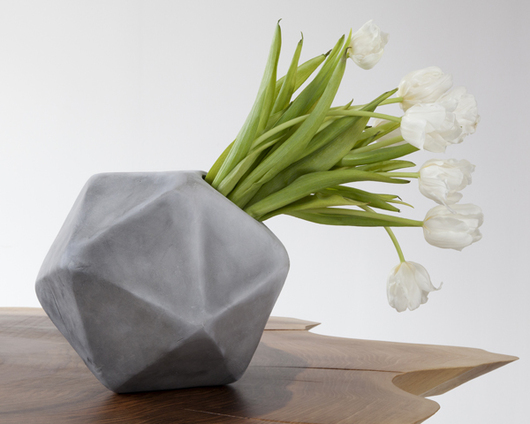
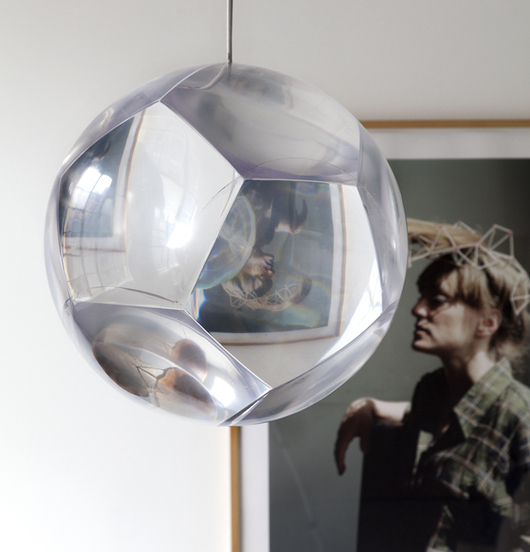
Most of the objects in the series are easy to understand from these photos, but not the lamp — what is it, and how is it made? Also, in what way does the triangular pillow serve two purposes?
The Dodecahedron stands simultaneously as an elegant lamp and an optical instrument. By looking through its pentagram-shaped lenses, everything behind it appears upside-down. This piece is also an homage to the incandescent light bulb, which is magnified by the lenses and projects hexagonally shaped warm fields of light throughout whatever space it’s in. It was made by pouring a lake of acrylic resin into a spherical mold that was repeated twelve times to create each pentagram-shaped lens. The Tetrahedron pillow can serve as a headrest, a pillow to lean on, or you can arrange many of them together or create a type of a fort and use it for pillow fights.
Can you describe what your own home is like, and the kinds of objects you personally choose to live with?
I live in an old loft on the Bowery with a lot of my prototypes, art, and modernist furniture I’ve collected over the years. I like objects that are based on original ideas; they have to be beautiful to look at, comfortable to touch, and should be able to collect traces of life and passing time.
Please tell us one secret about this exhibition.
The photo on the wall is by my brother Lukas Wassmann. Besides being a beautiful piece of art, it’s also performing a function in the installation, proving the optical phenomenon that everything one sees through the Dodecahedron chandelier is turned upside down.
